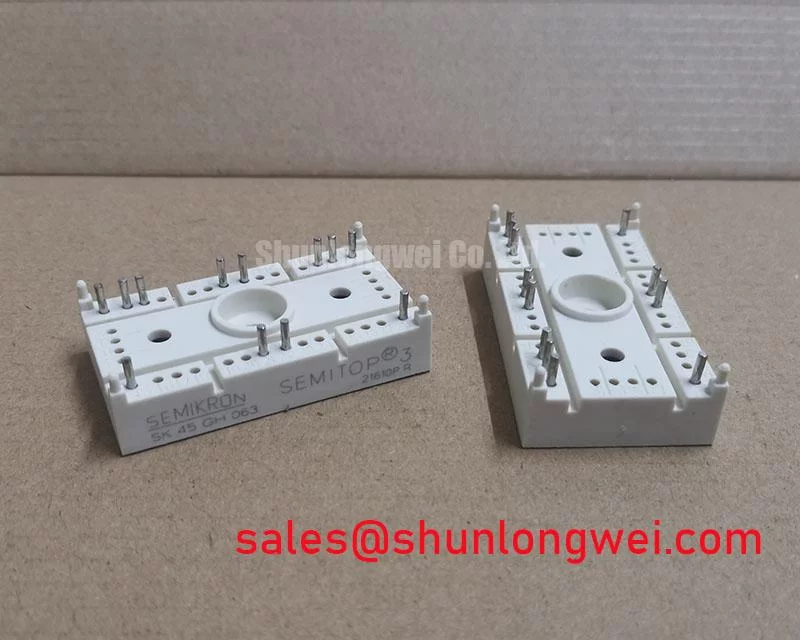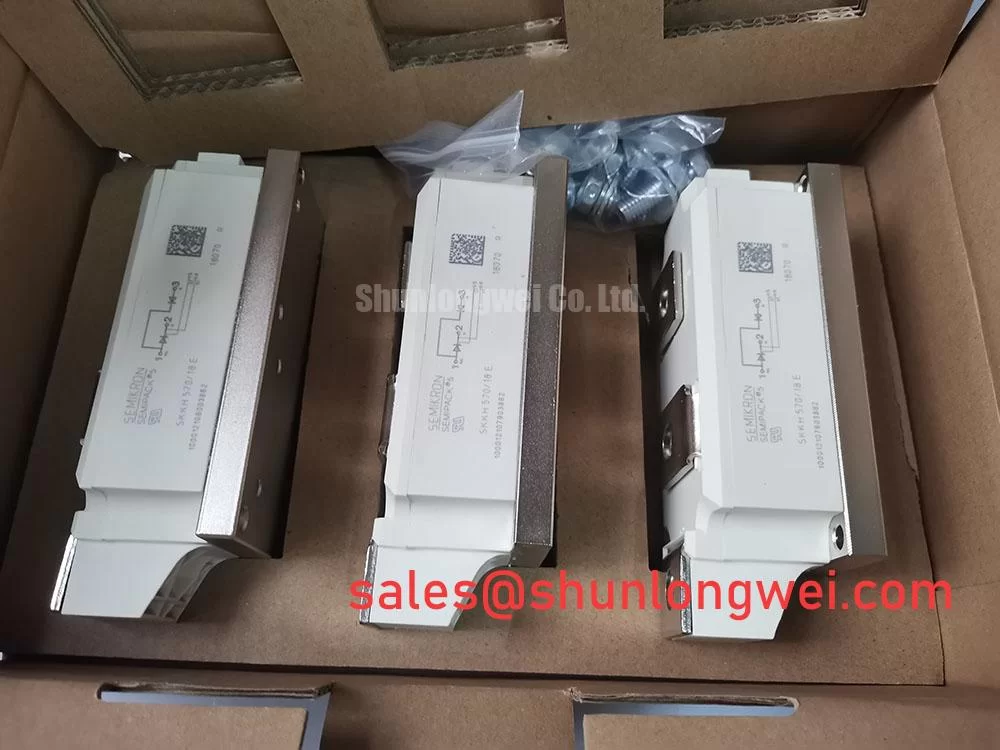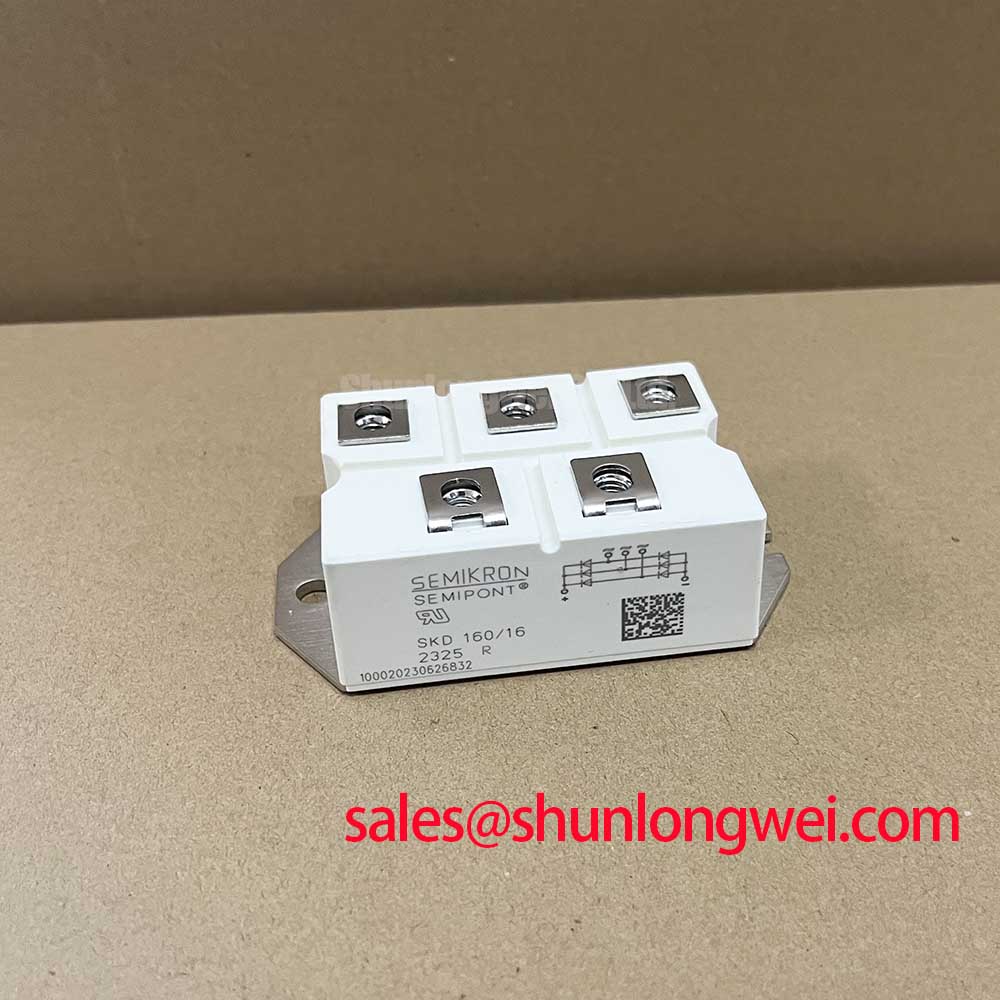Content last revised on November 15, 2025
SKT240/04E | 400V Thyristor for Reliable Power Control
A hermetically sealed thyristor module featuring hard solder joints and a robust stud mount for exceptional thermal performance and long-term reliability in demanding industrial applications.
The Semikron SKT240/04E is a high-reliability thyristor module designed for robust power control in industrial environments. Its core specifications include: 400V | 240A (ITAV) | ITSM 6500A. This module provides significant advantages through its mechanically sound construction and superior thermal pathway. For engineers wondering how to achieve optimal heat dissipation with a stud-mount device, the SKT240/04E's design, when coupled with correct mounting torque and thermal compound, provides a low-resistance path essential for system longevity. Its construction directly addresses the need for components that withstand both electrical and environmental stress.
Key Parameter Overview
Parameters Defining Thermal and Electrical Stability
The performance of the SKT240/04E is defined by key electrical and thermal parameters that directly influence its integration and operational lifespan. Understanding these values is crucial for system-level design and reliability forecasting. The following table highlights critical specifications and their direct engineering significance, based on the component's datasheet.
| Parameter | Value | Engineering Significance |
|---|---|---|
| VDRM / VRRM (Repetitive Peak Voltage) | 400 V | Defines the maximum permissible instantaneous off-state and reverse voltage, making it suitable for controlled rectification on low-voltage AC lines. |
| ITAV (Average On-State Current) | 240 A (@ Tcase = 85°C) | Indicates the module's continuous current handling capability under specified case temperature, a primary factor for sizing in applications like AC switches and motor soft-starters. |
| ITSM (Surge On-State Current) | 6500 A (@ 10 ms, Tvj = 25°C) | Represents the device's ability to withstand significant, non-repetitive fault currents, a critical measure of system resilience against line faults and short circuits. |
| Rth(j-c) (Thermal Resistance, Junction-to-Case) | 0.1 K/W | This value acts like a bottleneck for heat flow; its low value signifies highly efficient heat transfer from the semiconductor junction to the module case, crucial for preventing thermal runaway. |
| Mounting Torque | 30 ± 10% Nm | A critical assembly parameter. Applying the correct torque to the M16 stud ensures minimal contact thermal resistance between the module and the heatsink, maximizing heat dissipation. |
Intra-Series Comparison & Positioning
Positioning the SKT240/04E Within its Voltage Class
The SKT240/04E is part of a broader family of thyristor modules that share the same physical package and current rating but differ in their voltage capabilities. This allows engineers to select the appropriate component based on the specific electrical requirements of their system without altering the mechanical layout.
- SKT240/04E (400V): This model is specifically targeted at low-voltage industrial applications, such as 230V AC line controllers, soft starters, and temperature control systems where the operating voltage provides a sufficient safety margin.
- Higher Voltage Variants: For systems operating on higher voltage mains (e.g., 400/480V AC lines), related components like the SKT240/12E (1200V) offer the same current handling and package but with an increased voltage headroom.
For low-voltage AC control systems under 400V requiring maximum uptime, the SKT240/04E's hermetic sealing offers a clear advantage over plastic-encapsulated alternatives. The choice between the /04E and its higher-voltage counterparts is a direct trade-off between the required voltage blocking capability and component cost for a given application.
Application Scenarios & Value
Deployments Where Long-Term Reliability is Paramount
The robust construction of the SKT240/04E makes it an excellent component for power control circuits where operational stability and resilience to harsh conditions are primary design considerations. Its value is most evident in applications that cannot afford unexpected downtime.
- Industrial Motor Soft-Starters: In manufacturing and processing plants, this module can reliably manage the inrush current of AC motors, reducing mechanical stress on equipment and electrical stress on the power grid. The hermetic seal protects it from industrial contaminants.
- AC Power Switches: Used for static switching of high-current AC loads, such as in industrial heating elements or large lighting rigs. The low thermal resistance and high surge capability ensure safe operation even under fluctuating loads.
- Controlled Rectifiers: In battery chargers and power supplies, the SKT240/04E provides a dependable solution for controlled AC-to-DC conversion, where its hard-soldered joints contribute to a long service life despite thermal cycling.
- Temperature Control Systems: For industrial ovens and furnaces, this thyristor can be used in phase-angle control circuits to precisely regulate power delivery, with its stud-mount design ensuring efficient integration into the system's thermal management solution. For a deeper understanding of how such components fail, an analysis of common failure modes in power modules provides valuable context.
Industry Insights & Strategic Advantage
The Strategic Value of a Hermetically Sealed Architecture
In the landscape of industrial automation and power infrastructure, the push for increased productivity and reduced total cost of ownership places immense pressure on component-level reliability. What defines the SKT240/04E's reliability? Its hermetically sealed case and hard-solder internal construction. This design philosophy offers a distinct strategic advantage. While polymer-based modules are common, hermetically sealed metal-and-glass packages, like that of the Semikron SKT240/04E, provide an impermeable barrier against moisture and corrosive gases. This is not merely a feature but a foundational element of long-term stability, aligning with the operational demands of critical systems in chemical processing, marine, and heavy manufacturing sectors where atmospheric conditions can quickly degrade lesser components. This focus on intrinsic ruggedness ensures more predictable performance and an extended operational lifetime.
Technical Deep Dive
Inside the SKT240/04E: A Focus on Construction and Durability
The long-term performance of the SKT240/04E is rooted in its fundamental design choices, which prioritize mechanical and thermal durability. The internal construction utilizes hard solder joints, a critical feature for devices subjected to repeated temperature fluctuations. Unlike softer solders, this technique mitigates the risk of solder fatigue—a common failure mechanism in power modules—thereby enhancing the device's power cycling capability.
Furthermore, the hermetically sealed metal case with a glass insulator provides a superior defense against environmental factors. This construction prevents ingress of humidity, dust, and corrosive agents that can lead to premature failure. The threaded M16 stud serves a dual purpose: it provides a secure, vibration-resistant mechanical mounting and creates an effective, low-resistance thermal path to an external heatsink. Effective Thermal Resistance management is the cornerstone of reliable power electronics, and this module's design directly facilitates it.
Success Stories / Deployment Snippets
Field Snippet: Maintaining Uptime in a High-Vibration Environment
A system integrator for automated stamping presses was experiencing premature failures in the power controllers for the machine's large AC motors. The constant, high-frequency vibration was causing intermittent connections and eventual failure in their existing plastic-housed power modules. By redesigning the controller around the SKT240/04E thyristor module, they leveraged its robust M16 stud mounting. When installed to the specified torque, the module formed a mechanically solid unit with the chassis and heatsink, eliminating the vibration-related failure point. The result was a significant increase in the controller's mean time between failures (MTBF), contributing directly to improved factory uptime.
Frequently Asked Questions (FAQ)
What is the primary advantage of the SKT240/04E's hermetically sealed metal case?
The primary advantage is superior environmental protection. The hermetic seal creates an impermeable barrier against moisture, dust, and corrosive chemicals, ensuring the long-term reliability and stable electrical characteristics of the semiconductor die, which is particularly crucial in harsh industrial settings.
How does the hard solder construction impact the module's operational life?
Hard solder joints have a higher melting point and are more resistant to thermal fatigue than conventional soft solders. This makes the SKT240/04E more robust in applications with frequent on/off cycles or wide temperature swings, directly translating to a longer operational lifespan by reducing the risk of internal joint cracking.
What are the critical considerations when mounting the SKT240/04E to a heatsink?
Three factors are critical: surface flatness of the heatsink, application of a thin, even layer of thermal compound, and applying the correct mounting torque (30 Nm ±10%). Failure to adhere to these can result in high thermal resistance, leading to the device overheating and failing prematurely.
Is this module a thyristor (SCR) or a diode?
The SKT240/04E is a thyristor module, also known as a Silicon Controlled Rectifier (SCR). It is a controllable switch used for AC power control and in controlled rectifiers. It should not be confused with a simple rectifier diode, such as the SKR series from the same manufacturer.
Can the SKT240/04E be used for applications above 400V?
No, its repetitive peak voltage rating (VDRM/VRRM) of 400V is its maximum specified limit. Exceeding this voltage, even transiently, can lead to irreversible damage. For higher voltage systems, a part from the same family with a higher voltage rating, such as the SKT240/12E (1200V), should be selected.
For engineers and procurement managers evaluating robust components for power systems, the SKT240/04E presents a compelling case built on durable construction. The design choices, from its hermetic seal to its hard-solder internal bonds, are not arbitrary; they are deliberate engineering decisions aimed at extending service life and ensuring predictable performance. When designing for longevity, considering how a component's physical architecture mitigates common failure modes is as important as its primary electrical ratings. This module invites a design philosophy where reliability is built in from the component level upwards.

















